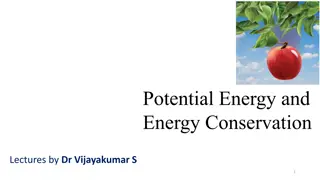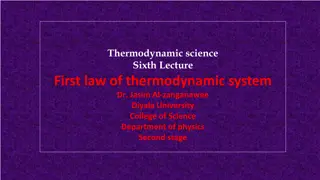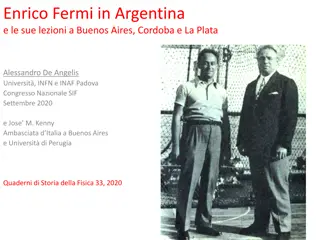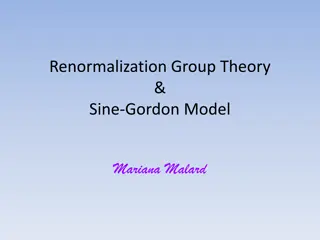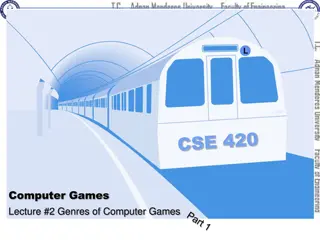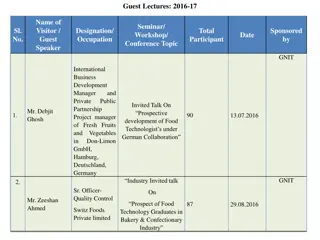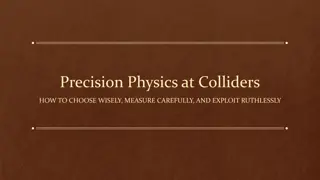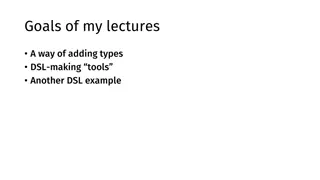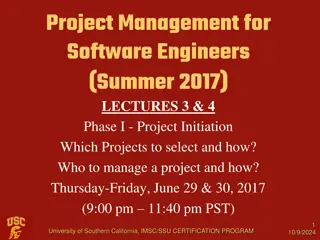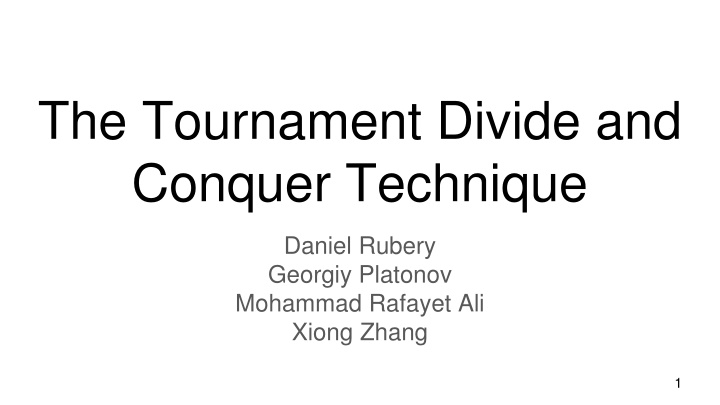
Tournament Divide and Conquer Technique and P-selective Language
Explore the Tournament Divide and Conquer technique in k-tournaments, with an interesting fact about selecting player subsets. Understand Theorem 3.1 and its proof, along with the concept of P-selective language. Discover examples and definitions in this insightful content.
Download Presentation

Please find below an Image/Link to download the presentation.
The content on the website is provided AS IS for your information and personal use only. It may not be sold, licensed, or shared on other websites without obtaining consent from the author. If you encounter any issues during the download, it is possible that the publisher has removed the file from their server.
You are allowed to download the files provided on this website for personal or commercial use, subject to the condition that they are used lawfully. All files are the property of their respective owners.
The content on the website is provided AS IS for your information and personal use only. It may not be sold, licensed, or shared on other websites without obtaining consent from the author.
E N D
Presentation Transcript
The Tournament Divide and Conquer Technique Daniel Rubery Georgiy Platonov Mohammad Rafayet Ali Xiong Zhang 1
K-tournaments Consider the set of k people playing a game with the following properties: 1)Game consists of multiple matches, with only two players in each match 2)Each player play against each other exactly once. 3)Every match has a winner Such a setting can be represented by a directed graph. 2
Curious fact about tournaments The interesting fact about tournaments is that we can select a very small subset of players such that each player not from that subset defeats someone from that set. How small? A logarithmically small! 4
Theorem 3.1: Let G = (V, E) be a k-tournament, where V = {1, , k} is the set of nodes or players, and E is the set of edges or matches. Then there exists a subset H of V, such that: 1) 2) 5
Proof of Theorem 3.1: In a k-tournament, each player plays exactly k - 1 games. There must be at least one player who lost to at least (k - 1)/2 other players. Add this player to H. Remove the nodes corresponding to that player and to all the players who defeated him from the graph. The resulting graph has at most k/2 - 1 vertices. Apply the same procedure to the new graph. Since at each step we decrease the size of graph by factor of 2 (at least), we end up with at most log (k + 1) steps, so |H| log (k + 1) . 10
Definitions P-sel A language L is P-selective if there is a polynomial-time function f such that: f(x,y) is either x or y If x L or y L, f(x,y) L Notice that f(x,y) can do anything if x and y are not in L, so in some sense, f(x,y) selects which string is more likely to be in L Example: For a fixed real number r, {<a,b> | a/b < r} 11
Definitions P/poly Can be thought of as having small circuits that decide each length Easier to think of it as polynomial amount of advice More generally, for a class of languages C and class of functions F, let C/F denote the class of languages L such that: There exists a language A C, and h(n) such that |h(n)| F, and L = {x | <x,h(|x|)> A} So P/poly is equivalently: There is a language A P and h(n) of polynomial length such that x L iff <x,h(|x|)> A 12
Connection Between Tournaments and P-sel If L is P-selective, let f be a P-selector for L Then for a given length n, f gives a tournament on L=n We have an edge from a to b if f(a,b) = b Note: This requires f(a,b) = f(b,a) Then Theorem 3.1 gives a set H with at most log(2n+1) n+1 strings Every string in L=nis either in H, or beats a string in H Furthermore, any string in H or that beats a string in H is in L=n 13
P-sel P/poly Recall our definitions. To show a language L is in P/poly, we need a function g and a language A P such that: x L iff <x,g(|x|)> A So let g(n) encode the, at most, n+1 strings in H |g(n)| is polynomial in n Then A is accepted by the following deterministic Turing machine: On input <x,y> do the following: For each h in y, accept if x=h or f(x,h)=x 14 If we fail all the above, reject
Theorem 3.10 What does it mean? 22
Theorem 3.10 What does it mean? How to prove this? Hint Hint: We ll use Theorem 3.9 (if G is a k-tournament, we can find a core node which has a relatively short distance (<=2) to any other nodes) 23
Theorem 3.10 What we have: a selector function f for set L What we want: a linear advice function and an interpreter set A Consider this advice function g: This is great, now we have a linear advice (=n+1) and it seems to be useful, but how to construct the set A (the interpreter) based on the advice function? 24
Theorem 3.10 The interpreter is defined as: So if x is in L, by construction of the advice function we know <x, g(|x|)> is in A What if x is not in L? 25
The Tournament Divide and Conquer Technique Daniel Rubery Georgiy Platonov Mohammad Rafayet Ali Xiong Zhang 28
Attention We ll have an in-class quiz at the end of this lecture. In the quiz you need to show some understanding to the material covered today. During the quiz you can t use today s slides, but you can take a sheet of note during the lecture (if you didn t do it before) and use it in the quiz. Be prepared! 29
Recap At the end of last lecture we proved Theorem 3.10: 30
And remember we constructed an elegant advice function: The length of the advice string here is n + 1, but is it optimal? Or can we have even shorter advice strings, like in the length n ? 31
Theorem 3.13 We ll show that n bits simply cannot hold enough information to disambiguate a certain family of semi-feasible sets. How? A direct way is to find a set L that is 1. semi-feasible (i.e. P-sel set) 2. but is not NP/n 33
Construction Strategy We want to construct a set L, consisting mostly of holes. Holes? That means at widely spaced lengths, our set will include exactly some (possibly empty) left cut of strings of that length, and at other lengths it will be empty. What does it mean? 34
Interesting lengths Holes 35
Construction Strategy We want to construct a set L, consisting mostly of holes. Yet we will ensure that the set is of limited complexity, so we can conduct a brute- force search for strings. So P(olynomial) selector function exists!! 36
2 Claims Translation? There is a semi-feasible set (satisfying the 3 requirements) which is not NP/n . 39
Hint: Its not surprising if we have questions for both of the claims later! 40
Proof of Claim 3.14 Let L satisfy the 3 requirements, to prove L is semi-feasible, we need to construct a P-selector function f for L 41
Proof of Claim 3.14 Let s go through all the cases one by one: Can you see that by this construction, if one of (x, y) is in L, then the output of f(x,y) is in L! 42
But is this function P time computable? For the first 3 cases: clearly yes, since we only need to check the length of x and y For the last 2 cases, the trickiest part is in computing whether or not min{x, y} is in L. Is this part P time computable? 43
Recall that Q is of the form: In the last two cases, if Then the following must hold: Why? 44





